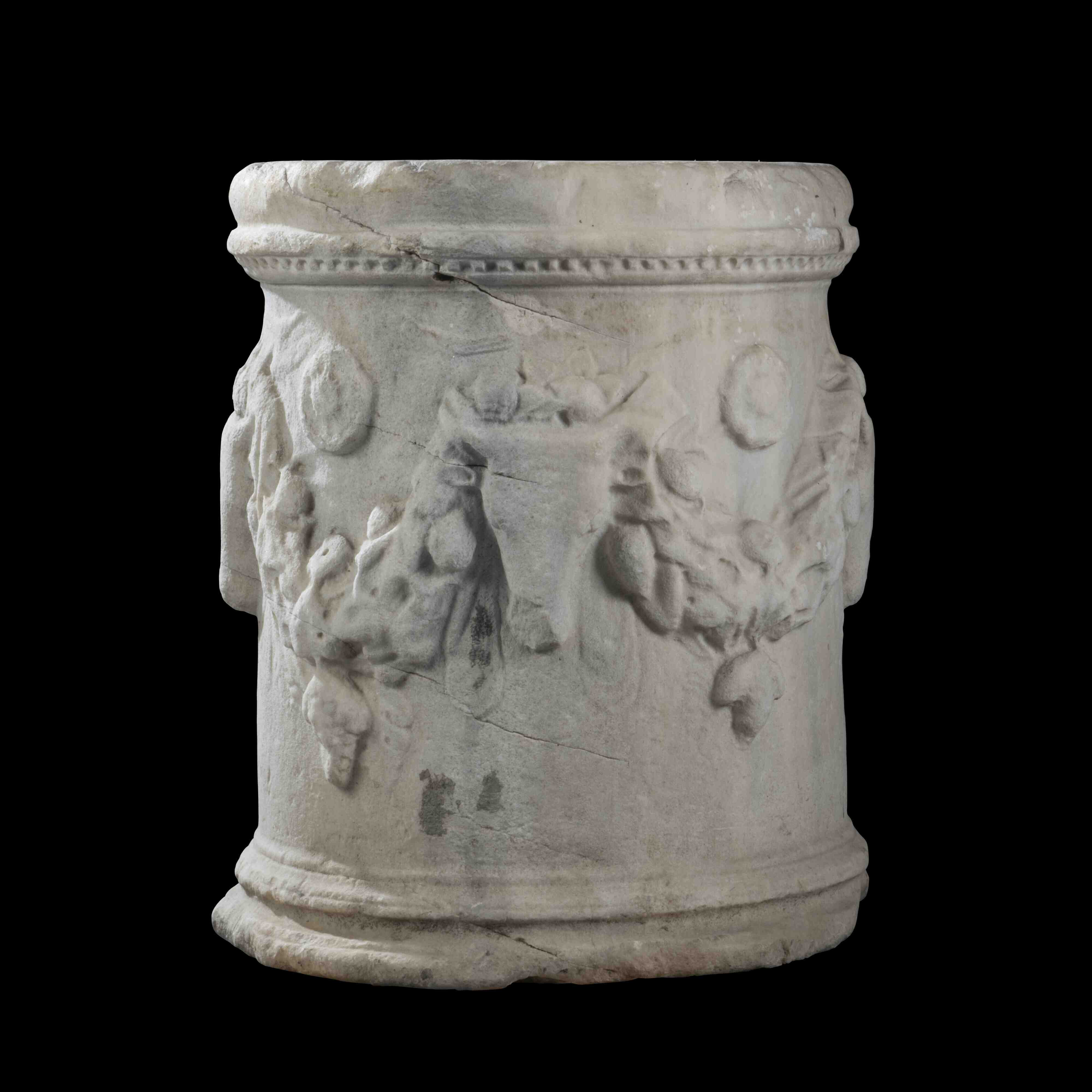Showing manly pursuits on the exterior, this cup delivers a surprising twist within. The obverse shows an athletic training scene, with three nude athletes preparing for the javelin throw. The youth to the left clears the ground with a pickaxe (strenuous exercise in its own right), while the other two carry javelins in preparation for the throw, perhaps testing their weight. All three wear wreaths in added red. Above them the inscription „εποιεσεν“. The opposite side shows a combat scene. At the centre, a brawny youth fends off the attack of two helmeted combatants. Intent upon the warrior before him, he seems to stop his progress by grasping his shield arm while preparing to bludgeon him with a stick. The third warrior strides to the left, head turned to the central combatant, both shield and weapon raised. A fragmentary inscription in added red above. Continuous groundline in reserve; pairs of large palmettes sprout from the handles, framing each scene. The decoration within the cup departs from the masculine themes and shows a solitary woman within the tondo, delimited by a circle in reserve. Nude apart from the snood (sakkos) on her head, she crouches with feet braced upon the groundline and appears to tie a fillet or bandage upon her left shin. Behind her the inscription „εποιεσεν“.
Note
Respectable women were typically shielded from the male gaze in Athenian society, indicating that the one shown in the tondo is likely a prostitute (or ‘hetaira’), women who routinely took part in the otherwise all-male symposium providing both companionship and entertainment. Included in the interior of this cup, the imagery provides an erotically charged surprise to the drinker upon draining his cup of wine.












